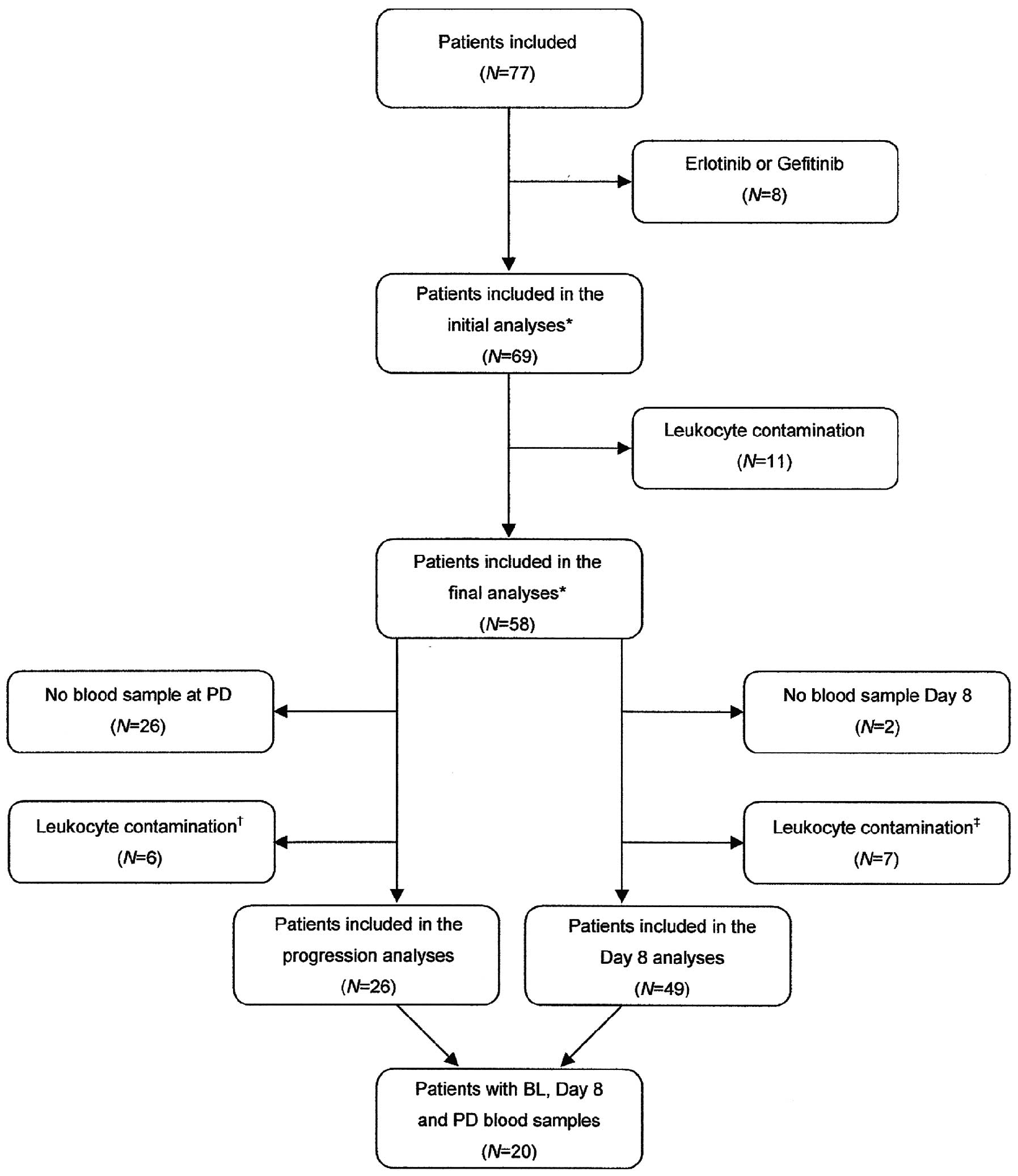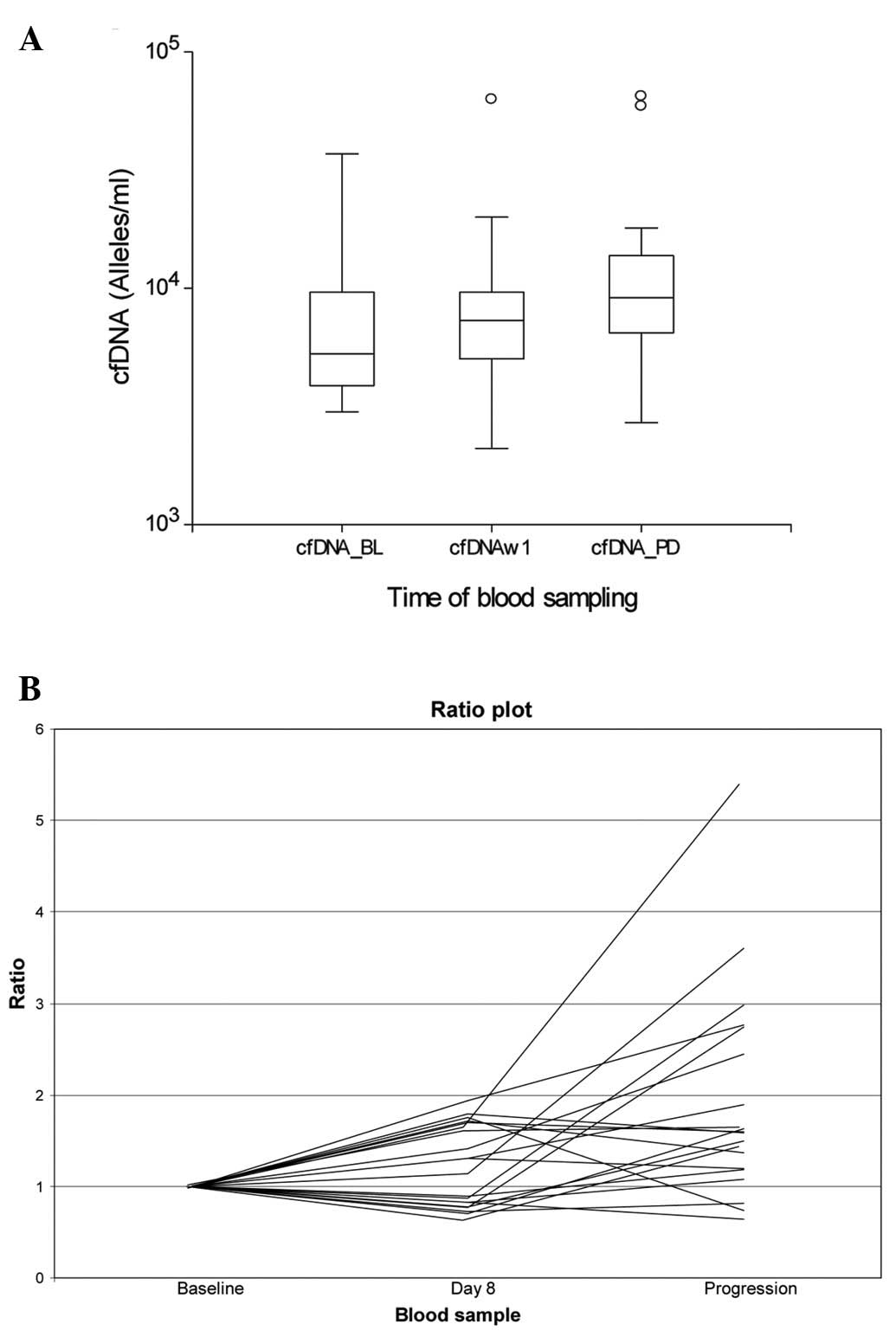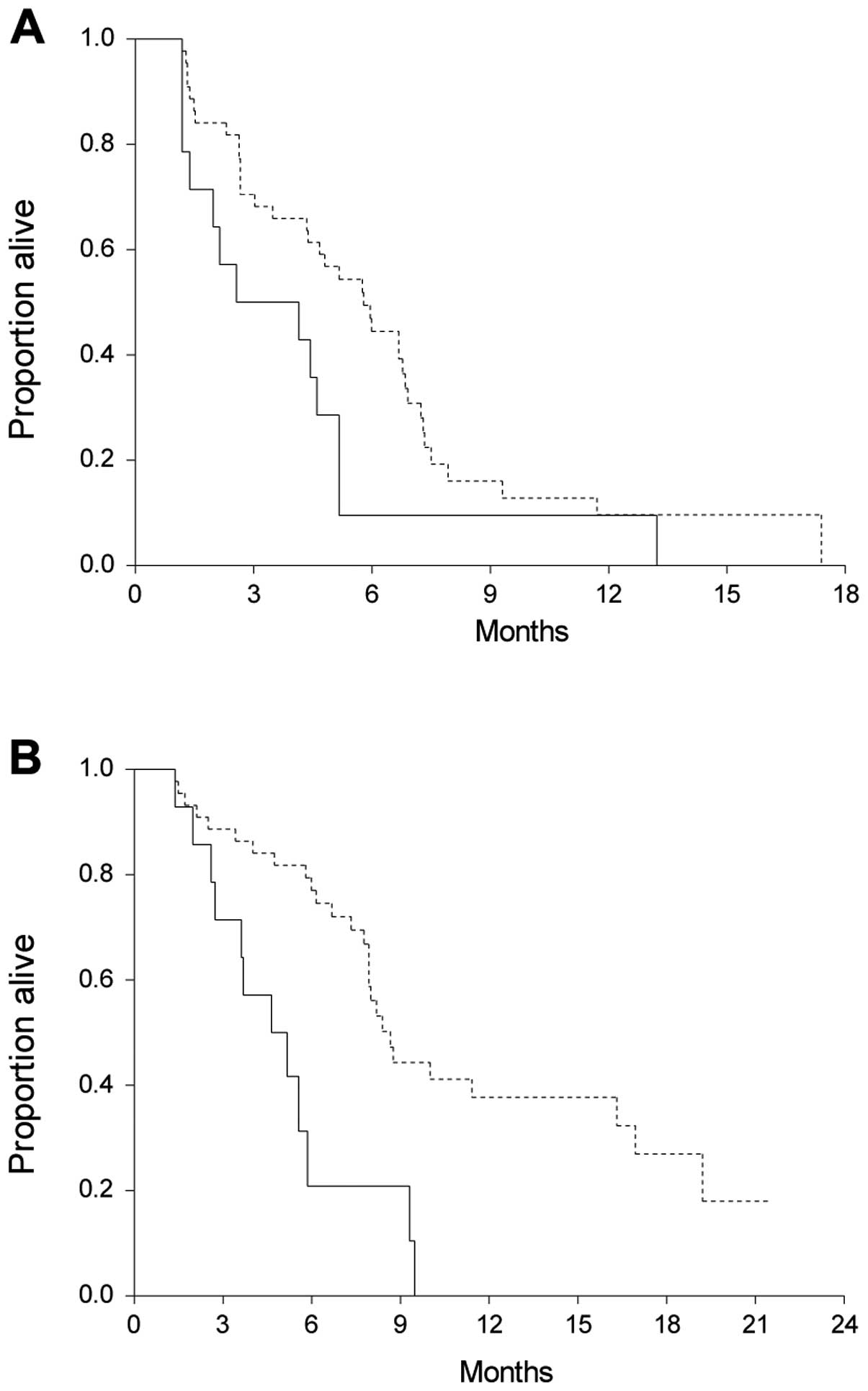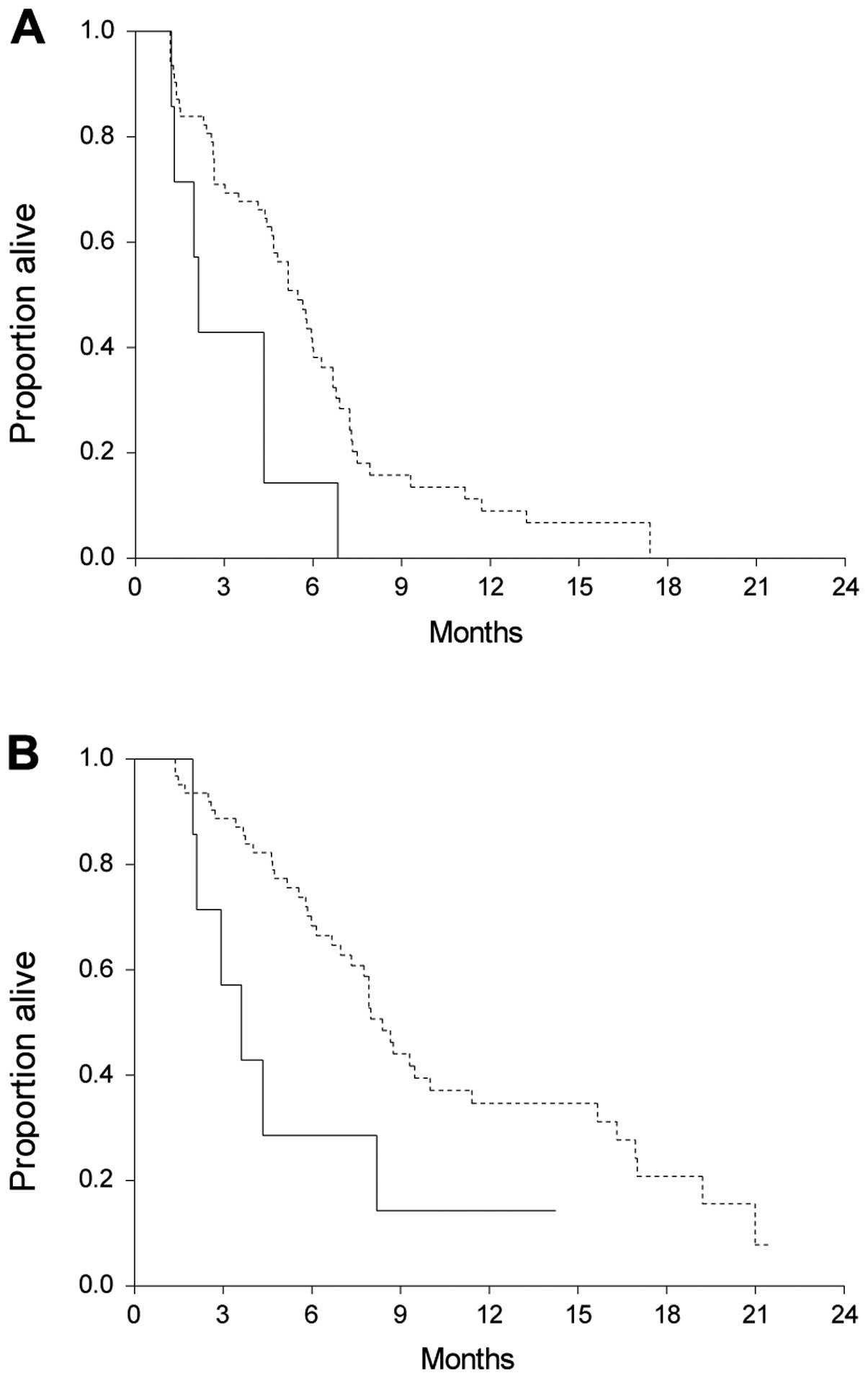|
1
|
Engholm G, Ferlay J, Christensen N, et al:
NORDCAN: Cancer Incidence, Mortality, Prevalence and Survival in
the Nordic Countries, Version 5.3 (25.04.2013). Association of the
Nordic Cancer Registries. Danish Cancer Society. http://www.ancr.nu.
Accessed March 2013
|
|
2
|
Ferlay J, Shin HR, Bray F, Forman D,
Mathers C and Parkin DM: GLOBOCAN 2008 v2.0. Cancer Incidence and
Mortality Worldwide: IARC CancerBase No. 10 [Internet].
International Agency for Research on Cancer; Lyon: 2010, http://globocan.iarc.fr.
Accessed March 2013
|
|
3
|
Hirsch FR, Janne PA, Eberhardt WE, et al:
Epidermal growth factor receptor inhibition in lung cancer: status
2012. J Thorac Oncol. 8:373–384. 2013.PubMed/NCBI
|
|
4
|
D’arcangelo M, Wynes MW and Hirsch FR: The
role of anaplastic lymphoma kinase inhibitors in the treatment of
advanced nonsmall cell lung cancer. Curr Opin Oncol. 25:121–129.
2013.PubMed/NCBI
|
|
5
|
Sasaki T, Rodig SJ, Chirieac LR and Janne
PA: The biology and treatment of EML4-ALK non-small cell lung
cancer. Eur J Cancer. 46:1773–1780. 2010. View Article : Google Scholar : PubMed/NCBI
|
|
6
|
Soda M, Choi YL, Enomoto M, et al:
Identification of the transforming EML4-ALK fusion gene in
non-small-cell lung cancer. Nature. 448:561–566. 2007. View Article : Google Scholar : PubMed/NCBI
|
|
7
|
Mok TS: Personalized medicine in lung
cancer: what we need to know. Nat Rev Clin Oncol. 8:661–668. 2011.
View Article : Google Scholar : PubMed/NCBI
|
|
8
|
Kuang Y, Rogers A, Yeap BY, et al:
Noninvasive detection of EGFR T790M in gefitinib or erlotinib
resistant non-small cell lung cancer. Clin Cancer Res.
15:2630–2636. 2009. View Article : Google Scholar : PubMed/NCBI
|
|
9
|
Stroun M, Maurice P, Vasioukhin V, et al:
The origin and mechanism of circulating DNA. Ann NY Acad Sci.
906:161–168. 2000. View Article : Google Scholar : PubMed/NCBI
|
|
10
|
Catarino R, Coelho A, Araujo A, et al:
Circulating DNA: diagnostic tool and predictive marker for overall
survival of NSCLC patients. PLoS One. 7:e385592012. View Article : Google Scholar : PubMed/NCBI
|
|
11
|
Gautschi O, Bigosch C, Huegli B, et al:
Circulating deoxyribonucleic acid as prognostic marker in
non-small-cell lung cancer patients undergoing chemotherapy. J Clin
Oncol. 22:4157–4164. 2004. View Article : Google Scholar : PubMed/NCBI
|
|
12
|
Nygaard AD, Garm Spindler KL, Pallisgaard
N, Andersen RF and Jakobsen A: Quantification of cell free DNA as a
prognostic factor in advanced NSCLC. J Can Ther. 4:1–7. 2013.
|
|
13
|
Sirera R, Bremnes RM, Cabrera A, et al:
Circulating DNA is a useful prognostic factor in patients with
advanced non-small cell lung cancer. J Thorac Oncol. 6:286–290.
2011. View Article : Google Scholar : PubMed/NCBI
|
|
14
|
Spindler KL, Pallisgaard N, Vogelius I and
Jakobsen A: Quantitative cell-free DNA, KRAS, and
BRAF mutations in plasma from patients with metastatic
colorectal cancer during treatment with cetuximab and irinotecan.
Clin Cancer Res. 18:1177–1185. 2012.
|
|
15
|
van der Drift MA, Hol BE, Klaassen CH, et
al: Circulating DNA is a non-invasive prognostic factor for
survival in non-small cell lung cancer. Lung Cancer. 68:283–287.
2010.PubMed/NCBI
|
|
16
|
Nygaard AD, Garm Spindler KL, Pallisgaard
N, Andersen RF and Jakobsen A: The prognostic value of KRAS mutated
plasma DNA in advanced non-small cell lung cancer. Lung Cancer.
79:312–317. 2013. View Article : Google Scholar : PubMed/NCBI
|
|
17
|
Punnoose EA, Atwal S, Liu W, et al:
Evaluation of circulating tumor cells and circulating tumor DNA in
non-small cell lung cancer: association with clinical endpoints in
a phase II clinical trial of pertuzumab and erlotinib. Clin Cancer
Res. 18:2391–2401. 2012. View Article : Google Scholar : PubMed/NCBI
|
|
18
|
Kumar S, Guleria R, Singh V, Bharti AC,
Mohan A and Das BC: Plasma DNA level in predicting therapeutic
efficacy in advanced nonsmall cell lung cancer. Eur Respir J.
36:885–892. 2010. View Article : Google Scholar : PubMed/NCBI
|
|
19
|
Therasse P, Arbuck SG, Eisenhauer EA, et
al: New guidelines to evaluate the response to treatment in solid
tumors. European Organization for Research and Treatment of Cancer,
National Cancer Institute of the United States, National Cancer
Institute of Canada. J Natl Cancer Inst. 92:205–216. 2000.
View Article : Google Scholar : PubMed/NCBI
|
|
20
|
Steffensen KD, Waldstrom M, Grove A, Lund
B, Pallisgard N and Jakobsen A: Improved classification of
epithelial ovarian cancer: results of 3 danish cohorts. Int J
Gynecol Cancer. 21:1592–1600. 2011. View Article : Google Scholar : PubMed/NCBI
|
|
21
|
Sozzi G, Conte D, Mariani L, et al:
Analysis of circulating tumor DNA in plasma at diagnosis and during
follow-up of lung cancer patients. Cancer Res. 61:4675–4678.
2001.PubMed/NCBI
|
|
22
|
Kumar S, Guleria R, Singh V, Bharti AC,
Mohan A and Das BC: Efficacy of circulating plasma DNA as a
diagnostic tool for advanced non-small cell lung cancer and its
predictive utility for survival and response to chemotherapy. Lung
Cancer. 70:211–217. 2010. View Article : Google Scholar : PubMed/NCBI
|


















